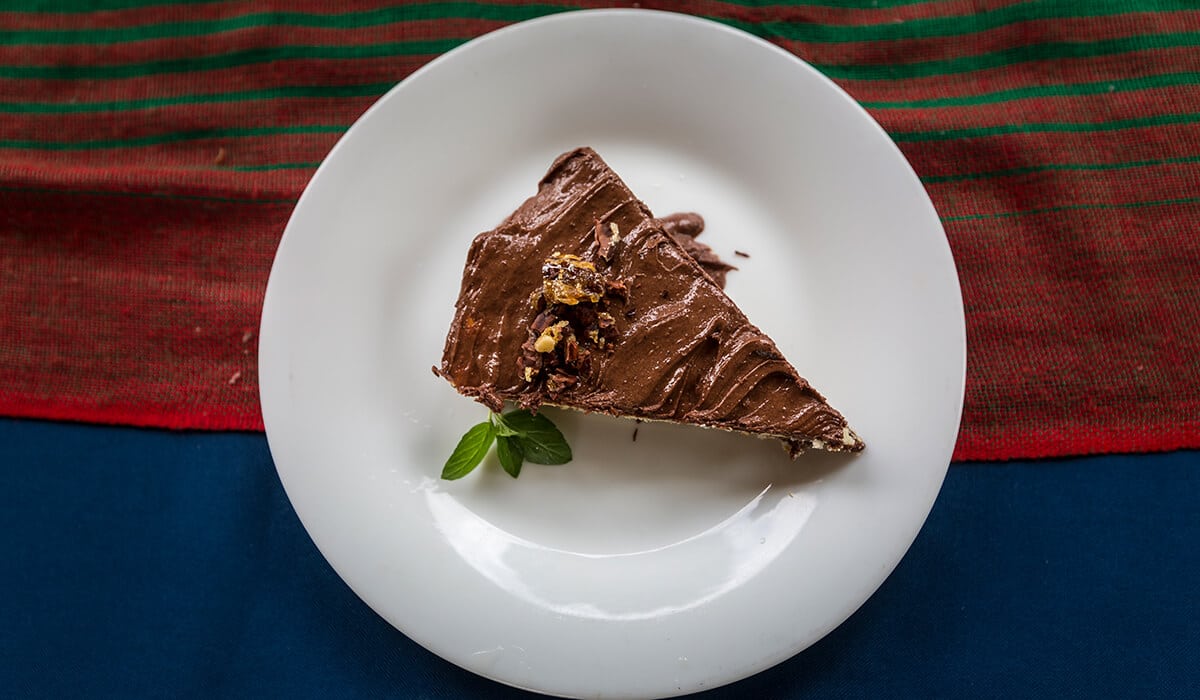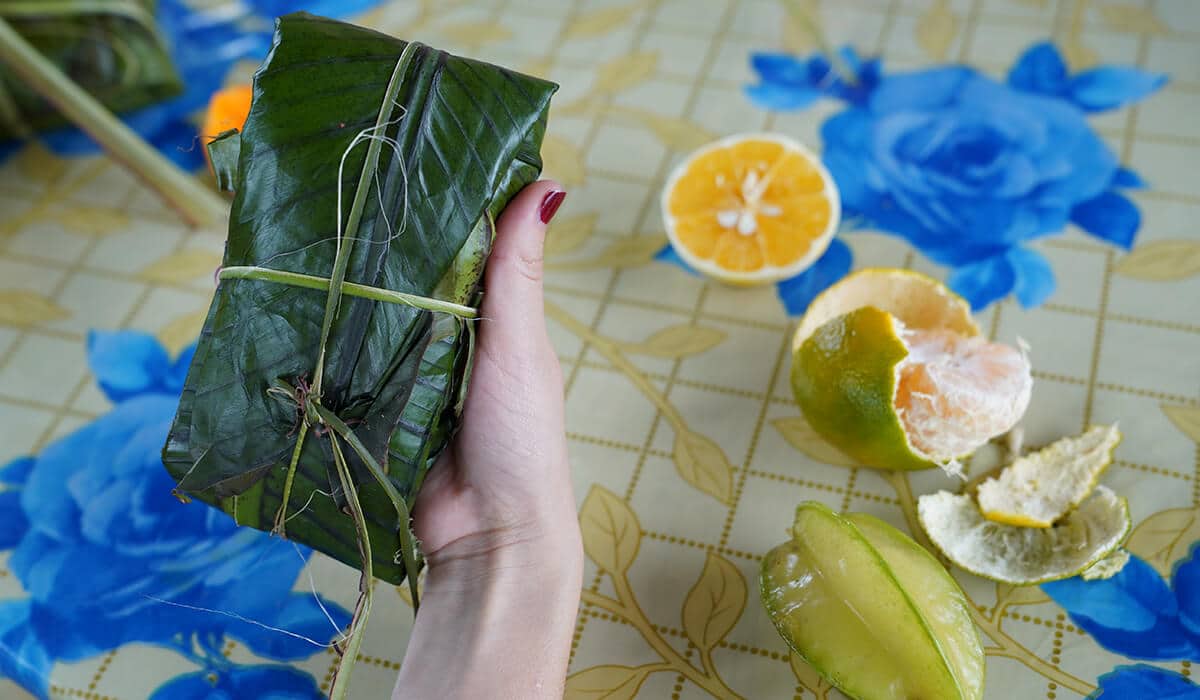Nothing brings people together like good food, and it’s also one of the most enjoyable ways to experience a new country (unless you get food poisoning). In Ecuador, typical food vary between the Coast, Andes, and Amazon. In the following blog, we’ll describe some tasty Ecuador typical food from each region that should relish as you travel through the country.
The most typical dishes in Ecuador
- Encebollado – Originally a dish from the Coast, the encebollado has become a regular meal across Ecuador and is easily one of Ecuador’s most typical foods. There are innumerable variations of this dish, but for the most part, it’s made with fish, yucca, and pickled red onion. On the Coast, encebollado is eaten first thing in the morning, though that might seem like a strong flavor to start the day. If you’re out partying the night before though, consider going for an encebollado the next morning – it’s great for hangovers!
- Bolón de verde – Another typical coastal meal, bólon de verde is literally a large ball (hence the word bolón) made from boiled plantain (verde), which is then mixed with cheese or pork and fried in a pan. It’s part of a coastal breakfast and is usually combined with fried eggs, ají, a cup of coffee and juice. Though bolón de verde is less common in the Andes and Amazon regions, you’ll still find it in many restaurants.
- Cuy Asado – Ah, yes, grilled pets can be tasty, can’t they? If any of you has ever had a guinea pig for a pet, that’s exactly what you’ll be munching on when you eat cuy asado. You have been forewarned! In Ecuador, guinea pigs can still be pets, but in most cases, they’re just another farm animal that gets consumed along with the pigs and chickens. Expect cuy to be chewier than you might expect!
- Hornado – This is a pork-based dish and is very common in the Andes. The pork is seasoned with garlic, cumin, and beer. Once it’s ready, it’s served with fried potato patties, mote (corn), fried banana, and a simple salad. Expect to find hornado at every marketplace, fair, and even on the street.
- Chontacuro – Most Ecuadorians eat rice, lentils and a piece of meat for lunch, but on some occasions, they’ll eat fried beetle larvae, otherwise known as chontacuro. For indigenous people in the Amazon, chontacuro represents an important source of protein that is easy to harvest. The larvae live in the bark and inner layers of palm trees, where the temperature and humidity are ideal for their development. They just munch on the heart of palm all day until they morph into shiny black beetles (aka Rhynchophorus palmarum beetle). You’ll find fried chontacuro in many places in the Amazon. Try it, it tastes like bacon!
- Encocado – This one is a personal favorite and originates in Ecuador’s Esmeraldas province. It is comparable to a coconut-based curry and is almost always prepared with seafood, be it fish, prawns, lobster or shrimp. This is served with a portion of rice and some patacones (fried plantain patties). If you’re traveling through Esmeraldas, you really can’t miss tasting this dish!
Sweets and deserts
Are you more of a sweet tooth? Here are some Ecuador typical foods that require a few grams of sucrose and/or fructose.
- Dulce de higos: Caramelized figs are most common in the Andes region. Since the fig fruit itself rarely ripens all the way due to the temperature and altitude of the Andes, locals began preparing figs by boiling them in honey and unprocessed sugar. It is normally served as a dessert, along with a few small pieces of white cheese. Sometimes, you’ll find it served with a scoop of vanilla ice cream (my preference, and I’m lactose intolerant!).
- Espumillas: Another traditional Ecuadorian snack, espumilla is a creamy meringue made with different fruits (often guayaba), egg whites and sugar. You’ll find vendors selling espumilla on the street in Quito Old Town and while it is very tasty, try to buy from a place that has refrigeration (egg whites in the sun can lead to some stomach issues…)
- Bizcochos – The area of Cayambe in the Andes is known for its bizcochos, or biscuits. These are made from flour, eggs, sugar, buttermilk, salt, water, and baking powder and are often served with string cheese and/or dulce de leche.
- Quimbolito – Quimbolito is a sweet pastry that is steam-cooked in achira leaves (an Andean tuber). It’s comparable to a sweet tamale but tends to be spongier and could be comparable to cake. Quimbolitos are often made with fruit inside, though the common version is plain with raisins decorating the top.
- Helado de Paila – When you buy it from a shop, helado de paila seems like any other type of ice cream. You wouldn’t guess that the traditional way of preparing it involves a large bronze paila and a cooling process that is done completely manually using straw, ice and salt. Try to purchase your helado at a place that makes it on the spot to see the process in action. You’ll find a variety of flavors available, including guanabana and mango, and many flavors aren’t made with milk (but make sure to ask in advance).
Ecuador typical food in cities on the Coast, Andes, and Amazon
- Quito – Guatita is a stew made with cow stomach and intestines and served with a portion of rice. It isn’t unique to Ecuador, as you’ll find it in Peru and Chile, but has become a symbolic dish here. You can find guatita being served in many restaurants and at outdoor food markets as well.
- Guayaquil – If you get a chance to stop through Guayaquil, make sure to try their crab soup, or really, crab anything. My mouth is watering just thinking about it. Fresh red crabs are dropped into a large pot and seasoned with garlic, onion, parsley, beer and more. When it’s ready, the crab is either served as a soup or on a plate with a side of rice and fried banana. On a warm evening, it’s best to accompany this dish with a chilled bottle of Club (local beer).
- Tena – Dubbed “the gateway to the Amazon,” Tena is a lovely tropical town at the foothills of the Andes. While you’re there, make sure to try maito, a local specialty made by steaming seasoned tilapia in bijao leaves (large green leaves). Once ready, this is served with yucca, rice and some lemon.
Wanderbus Ecuador
Many of our Wanderbus passes include stops at local markets where you can try some Ecuadorian typical food. For instance, routes through Chone (coast) and Ozogoche (Andes) include a traditional lunch, often made by a local family.
If you happen to be on a pass that doesn’t include a traditional lunch, make sure to ask the bilingual guide on your bus where to eat the best traditional food in town.
Happy wandering!





